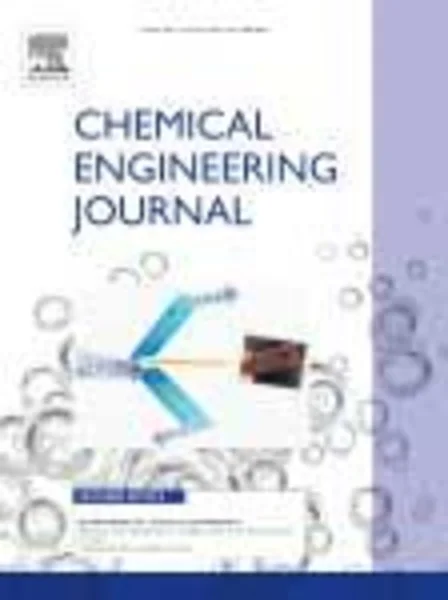-
chromium oxide/metallocene binary catalysts for bimodal polyethylene: hydrogen effects
جزئیات بیشتر مقاله- تاریخ ارائه: 1392/01/01
- تاریخ انتشار در تی پی بین: 1392/01/01
- تعداد بازدید: 609
- تعداد پرسش و پاسخ ها: 0
- شماره تماس دبیرخانه رویداد: -
bimodal resins came up to meet application requirements: low molecular weight for good processability and high molecular weight for mechanical properties. for obtaining this bimodality there are several strategies: physical melt mixing of the two components produced separately, a single catalyst in two different serial reactors and a single reactor technology employing a tailor made catalyst and/or switching conditions. this last method has many advantages such as lower investment costs, less process complexity and intimate mixing of high and low molecular weight components (improved product quality). by means of this single reactor technology, bimodal polyethylene was synthesized using a mesostructured catalyst based on al-sba-15 where two active centres, chromium and metallocene, were incorporated. ethylene polymerizations were carried out over binary catalysts (hybrid and mixed cr–metallocene) and the polyethylenes obtained were compared with those obtained with individual catalysts in order to determine the contribution of each active centre. as well, the effect on polymer properties of the partial pressure of hydrogen in the reactor was evaluated. results indicate that the hybrid catalyst (metallocene supported over cr–al-sba-15) and physical mixture (cr–al-sba-15 mixed with met-al-sba-15) lead to bimodal polyethylenes which combine high molecular weight, crystallinity and melting point with good processability (high melt index).
مقالات جدیدترین رویدادها
-
استفاده از تحلیل اهمیت-عملکرد در ارائه الگوی مدیریت خلاقیت سازمانی و ارائه راهکار جهت بهبود
-
بررسی تاثیر ارزش وجوه نقد مازاد بر ساختار سرمایه شرکت های پذیرفته شده در بورس اوراق بهادار تهران
-
بررسی تأثیر سطح افشای ریسک بر قرارداد بدهی شرکت های پذیرفته شده در بورس اوراق بهادار تهران
-
بررسی تأثیر رتبه بندی اعتباری مبتنی بر مدل امتیاز بازار نوظهور بر نقد شوندگی سهام با تأکید بر خصوصی سازی شرکت ها
-
تأثیر آمیخته بازاریابی پوشاک ایرانی بر تصویر ذهنی مشتری پوشاک ایرانی (هاکوپیان)
-
فروانی نسبی سندرم روده تحریک پذیر و ریفلاکس معده به مری در دانشجویان ورودی سال 80 دانشگاه تهران
-
مقایسه تاثیرات بوم شناسی در مدل های طراحی محیط انسان ساخت
-
بررسی ساختاری و ریزساختاری گسل فعال کره بس
-
بررسی عملکرد محور هیپوفیز تیروئید و متابولیسم کلسیم و فسفر در مبتلایان به تالاسمی ماژور استان هرمزگان
-
estimating fundamental periods of steel plate shear walls
مقالات جدیدترین ژورنال ها
-
مدیریت و بررسی افسردگی دانش آموزان دختر مقطع متوسطه دوم در دروان کرونا در شهرستان دزفول
-
مدیریت و بررسی خرد سیاسی در اندیشه ی فردوسی در ادب ایران
-
واکاوی و مدیریت توصیفی قلمدان(جاکلیدی)ضریح در موزه آستان قدس رضوی
-
بررسی تاثیر خلاقیت، دانش و انگیزه کارکنان بر پیشنهادات نوآورانه کارکنان ( مورد مطالعه: هتل های 3 و 4 ستاره استان کرمان)
-
بررسی تاثیر کیفیت سیستم های اطلاعاتی بر تصمیم گیری موفق در شرکتهای تولیدی استان اصفهان (مورد مطالعه: مدیران شرکتهای تولیدی استان اصفهان)
-
اولویت بندی شاخص های کیفیت محیطی از دید گردشگران با استفاده از مدل های (saw , vikor ,electre و کپلند)
-
تحلیل و ارزیابی کیفیت خدمات شهری در مناطق شهری کلان شهر اهواز
-
تحلیل حقوقی خشونت علیه زنان با توجه به حقوق بین الملل بشر
-
heritage preservation as strategy for recomposing conflict territories
-
evaluation and analysis of drought on the quantity and quality water resources in lorestan province (case study of khorram river)




سوال خود را در مورد این مقاله مطرح نمایید :